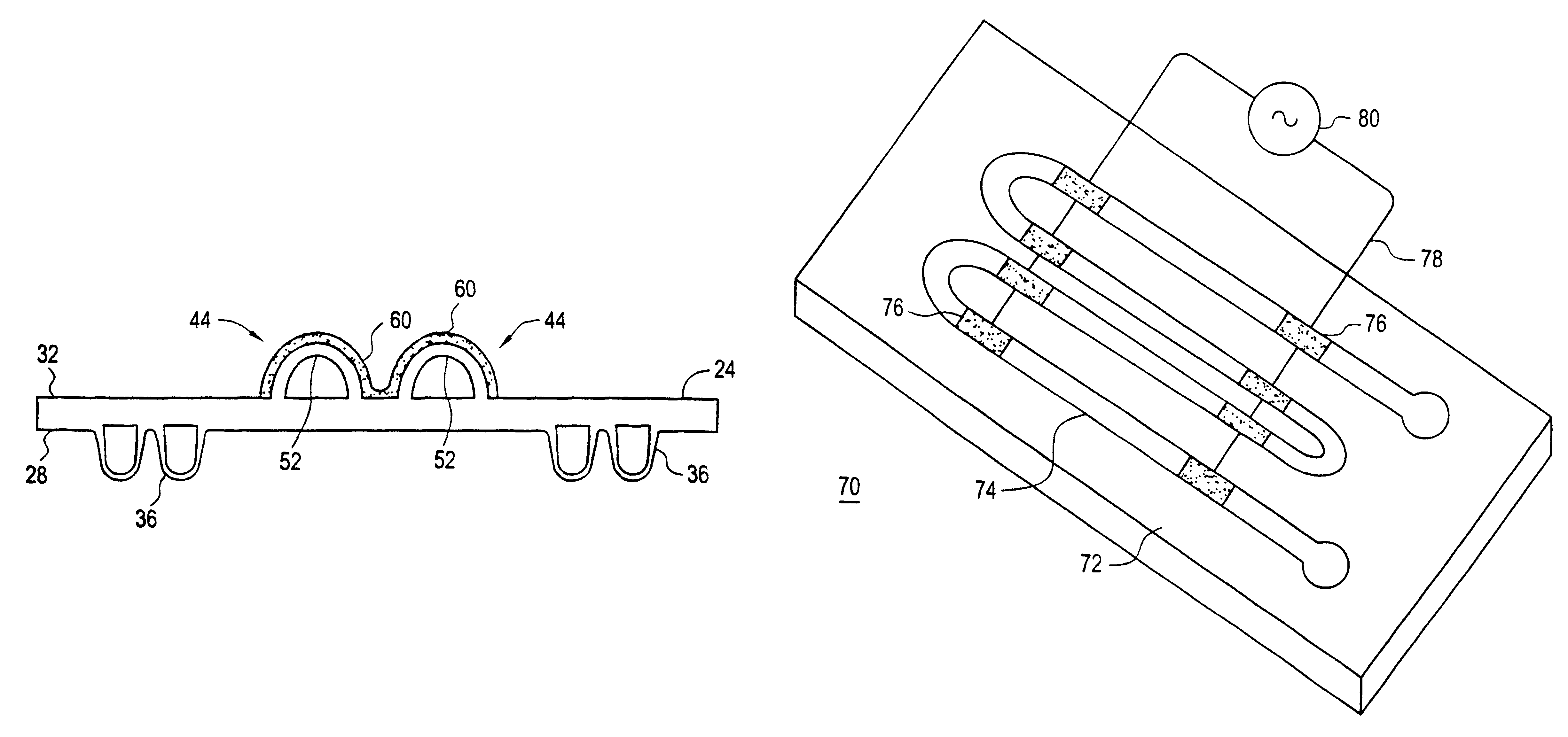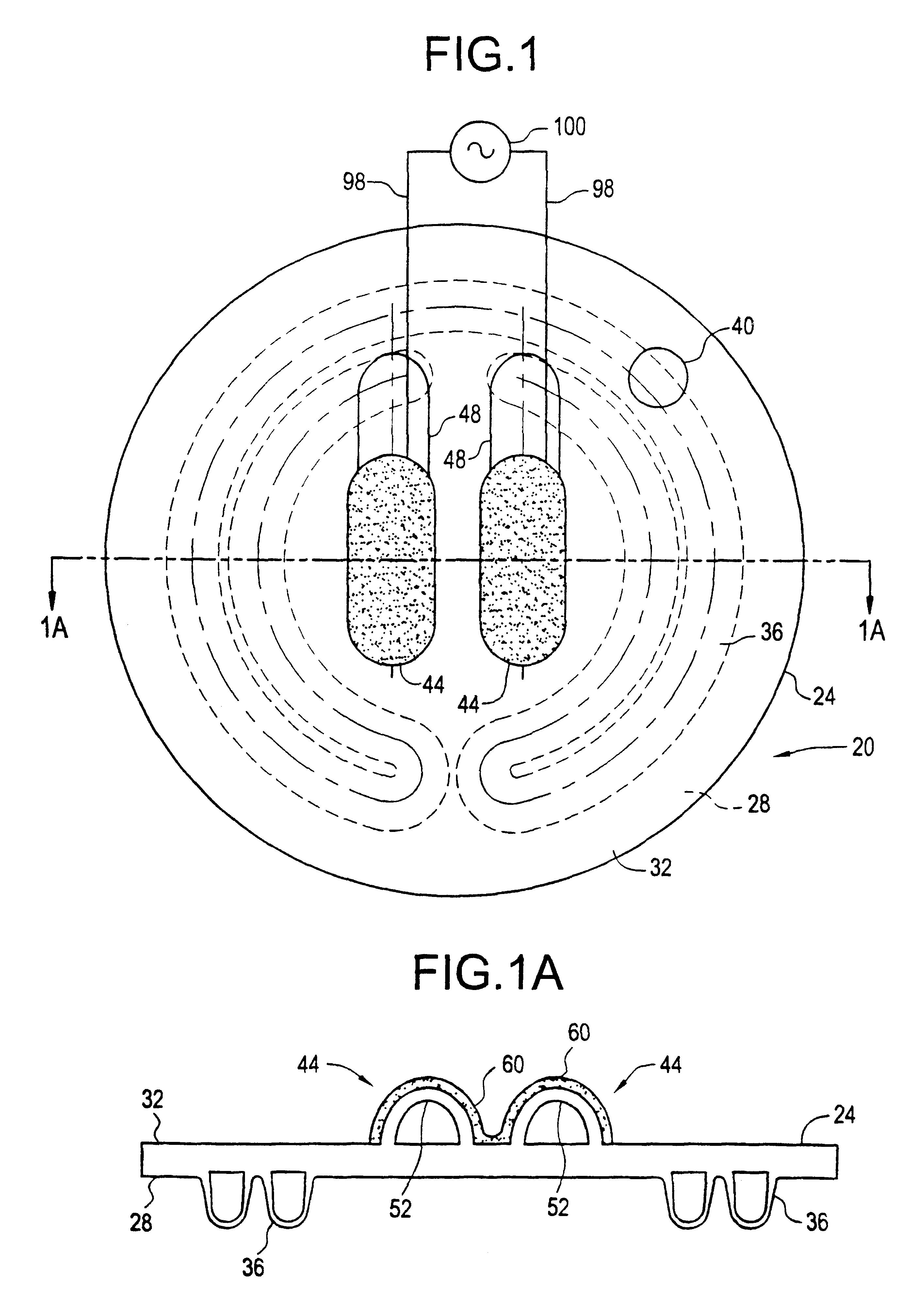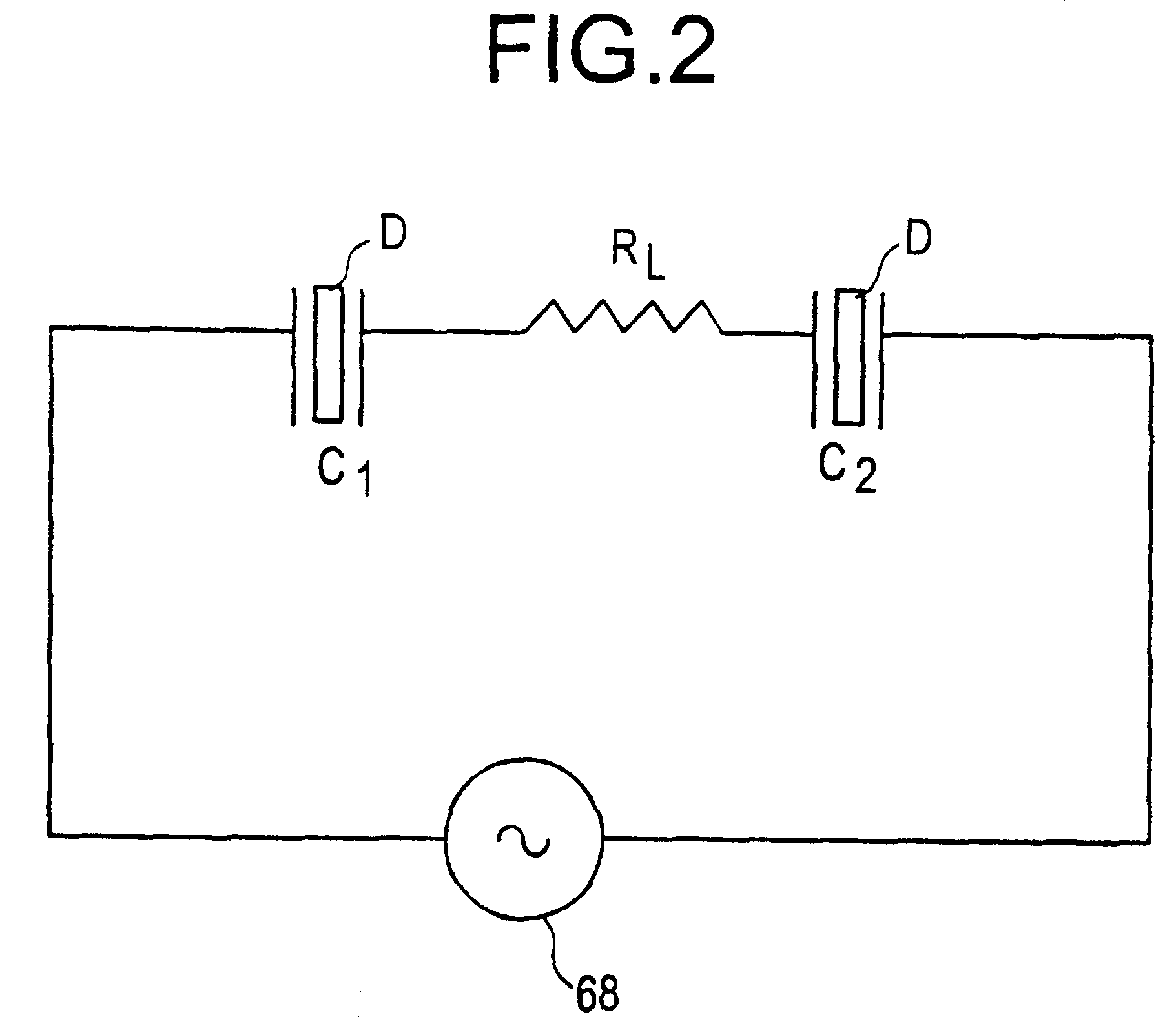External electrode driven discharge lamp
a discharge lamp and external electrode technology, applied in the direction of gas discharge lamp details, electric discharge tubes, electrical apparatus, etc., can solve the problems of internal electrode discharge lamps, failure of discharge lamps, and reduced lifetime of discharge lamps, so as to reduce the maximum voltage requirement, and save energy and cost.
- Summary
- Abstract
- Description
- Claims
- Application Information
AI Technical Summary
Benefits of technology
Problems solved by technology
Method used
Image
Examples
examples 1 , 2
Examples 1, 2, and 3 have an electrode thickness of 0.75 mm, and Example 4 has an electrode thickness of 0.50 mm.
The power source for the internal electrodes was a 30 mA DC driven ballast. The operating point was chosen as the point at which the light emitting efficiency was the greatest, i.e., at a lamp resistance of 50 kohm. An equal light output condition was maintained for the internal and external electrode configurations. The power source for the external electrodes was a variable frequency plasma generator.
It has been observed that there is no fundamental difference in how power is applied to the discharge lamps of the following Table, i.e., whether the discharge is driven by internal or external electrode configurations, as long as the circuit is tuned to the proper operating frequency when driving through external electrodes, i.e., the frequency at which the greatest light emitting efficiency is achieved. In the laboratory experiment examples tuning was achieved with a vari...
PUM
 Login to View More
Login to View More Abstract
Description
Claims
Application Information
 Login to View More
Login to View More - R&D
- Intellectual Property
- Life Sciences
- Materials
- Tech Scout
- Unparalleled Data Quality
- Higher Quality Content
- 60% Fewer Hallucinations
Browse by: Latest US Patents, China's latest patents, Technical Efficacy Thesaurus, Application Domain, Technology Topic, Popular Technical Reports.
© 2025 PatSnap. All rights reserved.Legal|Privacy policy|Modern Slavery Act Transparency Statement|Sitemap|About US| Contact US: help@patsnap.com



